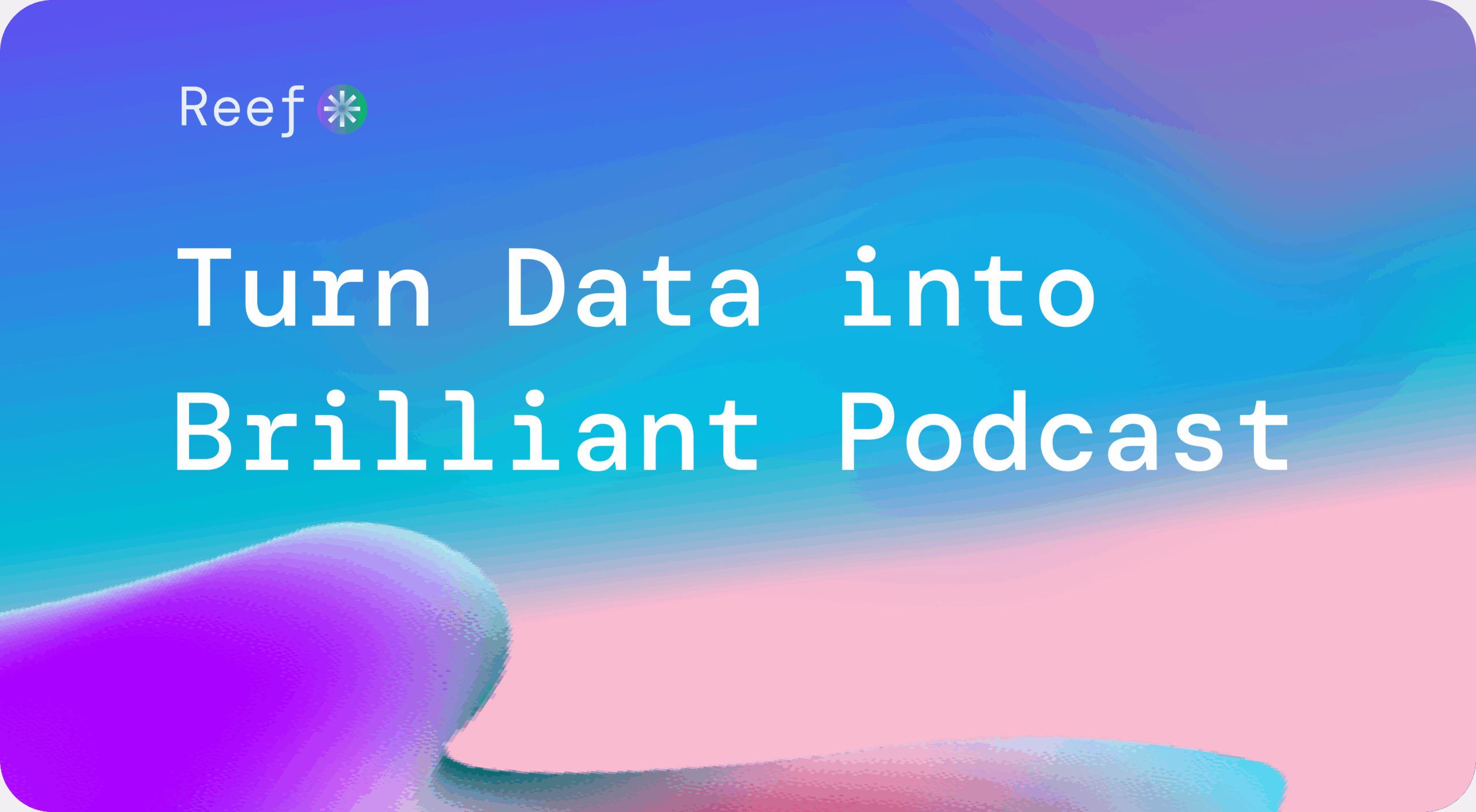Table of Contents
Overview
In today’s data-driven world, simply presenting numbers isn’t enough. We need to tell compelling stories that resonate with our audience. Enter Reef, a data intelligence platform that goes beyond traditional analysis by integrating audio storytelling and podcasting. Reef empowers users to not only generate and analyze data but also to communicate insights in a more engaging and accessible way. Let’s dive into what makes Reef a unique player in the data intelligence space.
Key Features
Reef boasts a range of features designed to streamline data analysis and enhance communication:
- Data Generation: Create datasets directly within the platform, saving time and resources.
- Trend Analysis: Identify patterns and trends within your data using Reef’s built-in analytical tools.
- Data Visualization: Transform raw data into compelling visuals, including charts, graphs, and more.
- Audio Narration: Add a personal touch by recording audio narrations to explain your data insights.
- Podcast Integration: Seamlessly embed your data-driven stories into podcasts for wider distribution and engagement.
How It Works
Using Reef is a straightforward process. First, users input or generate datasets directly on the platform. Once the data is loaded, Reef provides a suite of tools to analyze trends and create visualizations. The real magic happens when you add audio. Users can record narrations to explain their findings, providing context and making the data more accessible. Finally, these audio-enhanced insights can be shared as standalone recordings or embedded into podcasts for a wider audience.
Use Cases
Reef’s unique blend of data analysis and audio storytelling opens up a variety of use cases:
- Market Research: Analyze market trends and present findings in an engaging podcast format for clients or internal teams.
- Business Intelligence: Create internal data reports with audio commentary to provide context and highlight key takeaways.
- Educational Content Creation: Develop data-driven educational materials with audio explanations to enhance learning.
- Internal Data Reporting: Improve the accessibility and engagement of internal reports by adding audio summaries.
- Podcast-Driven Data Storytelling: Build entire podcast episodes around data insights, creating a unique and informative listening experience.
Pros & Cons
Like any tool, Reef has its strengths and weaknesses. Let’s take a look at the pros and cons:
Advantages
- Combines data analysis with audio storytelling for enhanced engagement.
- Intuitive interface makes it easy to navigate and use.
- Supports creative formats, allowing for unique and compelling data presentations.
Disadvantages
- May require a learning curve for users unfamiliar with audio recording and editing tools.
- Niche use cases may limit its appeal to a broader audience.
How Does It Compare?
When compared to other data visualization and analysis tools, Reef stands out for its audio integration.
- Tableau: While Tableau excels at creating stunning visuals, it lacks the audio storytelling capabilities of Reef. Reef offers a more engaging and personal way to present data.
- Power BI: Power BI is a powerful enterprise-grade solution, but it’s less focused on media and creative storytelling. Reef provides a creative edge for those looking to communicate data in a unique and memorable way.
Final Thoughts
Reef is a compelling data intelligence platform that offers a fresh approach to data analysis and communication. By integrating audio storytelling, Reef empowers users to create more engaging and accessible data-driven narratives. While it may not be for everyone, Reef is a valuable tool for those looking to elevate their data presentations and connect with their audience on a deeper level.
